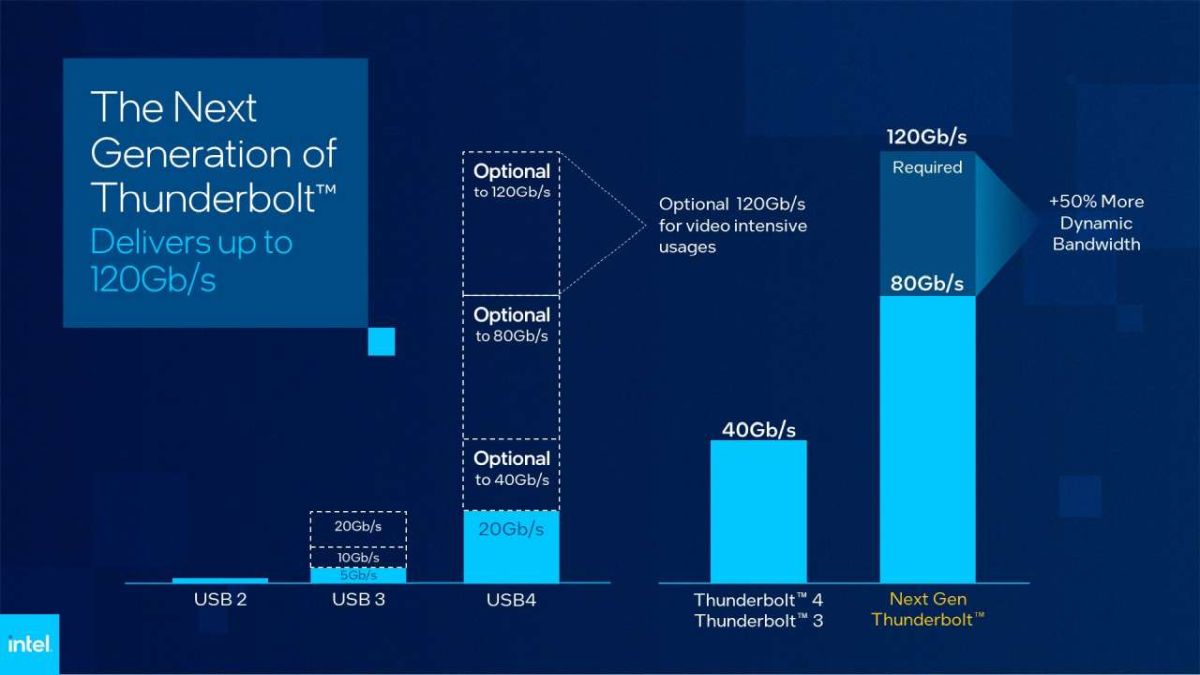On paper, Intel’s new Thunderbolt generation would be more than capable of delivering up to 80Gbps of bi-directional bandwidth, and up to 120Gbps for one of the best display experiences. The latter being up to triple the capability of today’s current connectivity and bandwidth standards, while the former number is twice the total bandwidth of the current Thunderbolt 4. In addition to the USB4 v2 specifications, the next generation Thunderbolt will also be able to support the newly released DisplayPort 2.1. As for file transfer speeds, it is able to deliver up to two times the PCIe data, making it ideal for much faster storage or linking up an external graphics card via a GPU enclosure. “Intel has always been the industry pioneer and leader for wired connectivity solutions, and Thunderbolt is now the mainstream port on mobile PCs and integrated into three generations of Intel mobile CPUs. We’re very excited to lead the industry forward with the next generation of Thunderbolt built on the USB4 v2 specification, advanced to this next generation by Intel and other USB Promoter Group members,” Jason Ziller, general manager of the Client Connectivity Division at Intel commented on the next-generation Thunderbolt. At the time of writing, Intel did not specifically say when the new generation of Thunderbolt will launch, but its official press release did say that consumers can look for more to brand names, features, and capabilities of the standard sometime in the following year. To that end, we’ll just have to keep our eyes open and ears to the ground for the feature. (Source: Intel)
